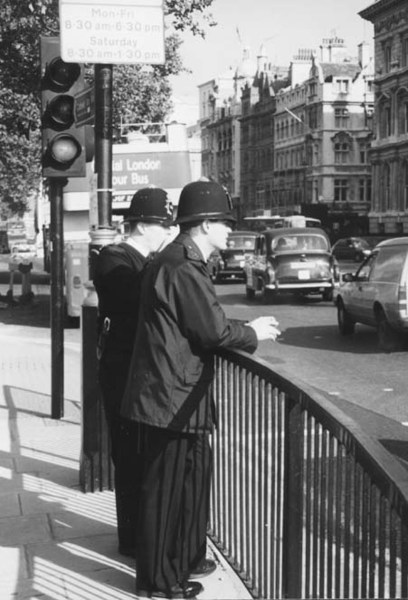London on a Shoestring
Visit Britian
With all those glitzy shops and grand hotels, you can easily spend a fortune in London. But you don’t have to. Few of the world’s great cities offer so much scope to have a good time for absolutely nothing – or very little money.
Shoestring Sightseeing
To enjoy London free of charge – just walk through it. It’s a huge city, but central areas are compact enough to explore on foot. Information centres can provide plenty of ideas for self-guided walks. For an inexpensive sightseeing tour, take one of the many organised walks on offer, typically costing around £6 per person (some are free).
At any time of year, London seethes with activity and spectacle. Each of its neighbourhoods is different – even those well off the tourist trails can be full of surprises. A sharp-eyed stroll through London’s historic quarters reveals a fascinating array of architecture and public monuments –backdrop to a heady bustle of metropolitan street-life. Look out for ‘Blue Plaques’ on buildings, indicating celebrity status of former residents. Discover the Square Mile’s mazelike alleys, where Roman walls rub shoulders with Wren churches and glittering office blocks. Follow the river along the Thames Path, or take a panoramic overview from any of its bridges. Soak up the scent of summer roses in Regent’s Park, or the jewel-bright rhododendrons of Richmond Park’s Isabella Plantation.
If your feet get tired, just hop on a London bus. It’s amazing how much you can see from the top of a double-decker. Lines 9, 11 and 15 take you past many of the central sights (on an old-fashioned Routemaster bus, if you’re lucky). To see less obvious aspects of London, take the overground Docklands Light Railway through the rapidly regenerating East End, or a tram-ride through the southern suburbs. Cheapest way to use London’s public transport system is by prepaid Oyster Card, valid on buses, tubes, trams and the DLR (a TravelCard may be better value if you want to use the suburban rail network).
London has well over 200 free museums and galleries, and many others cost less than a fiver. You can visit the permanent collections of world-class institutions such as the British Museum, the two Tates, the National Gallery, the V&A, and the Science and Natural History Museums completely free of charge. Not to mention dozens of smaller, specialist museums scattered all over the city. Track down the Clockmaker’s Museum, the Bank of England Museum, the Museum of Garden History and the weird and wonderful Sir John Soane’s Museum. It would take months to explore them all, and there’s always something new on London’s listings. Latest treat is the avant-garde, admission-free Saatchi Gallery, which opens in its Chelsea home in summer 2008 with a dynamic exhibition of contemporary Chinese art. Then there are the commercial art galleries – all welcome visitors just to browse as well as buy – and at the other end of the scale the Bayswater railings for a free al-fresco art show.
If you’re an avid sightseer and want to catch lots of pay-to-enter attractions as well as free ones, consider one of the inclusive deals available, such as the London Pass (50+ pay-to-enter attractions), or the GoSee Card (a 3- or 7-day pass covering 17 galleries and museums). Making the most of these means setting yourself a fairly gruelling schedule.
Shoestring Showtime
Tickets for top West End shows may cost a mint, but lots of London entertainment is completely free. Ceremonial occasions like the Changing of the Guard, the State Opening of Parliament and the Lord Mayor’s Show attract many visitors, as well as street festivals and annual events. Chinese New Year, the London Marathon, the Notting Hill Carnival and the Great River Race are regular fixtures on the capital’s social calendar, while jugglers, buskers and mime artists please crowds all summer in Covent Garden, Trafalgar Square or the South Bank.
To save booking fees on theatre seats, book in person at the box office rather than through a ticket agency. Avoid touts – those tempting offers may not be genuine. Some theatres, notably the National, offer a handful of standby or cheap same-day tickets for every performance (early birds snap up bargains as soon as the box office opens). The Globe Theatre sells ‘groundling’ (standing) tickets for just a fiver. Leicester Square’s theatre ticket kiosk run by London theatres (known as Tkts) sells same-day top-price tickets at half-price (plus a service charge). Fringe theatre and cabaret or comedy shows at pubs and clubs generally start around the £10 mark, compared with £25+ at most of the main theatres, while drama school productions (eg at the Guildhall) may be free.
You can pay the best part of £20 for a superior seat at one of the top West End cinemas in Leicester Square, but just a stone’s throw away in Leicester Place is the Prince Charles, an independent repertory cinema with showings from £4.00 (even cheaper for members). Mainstream chain cinemas such as Odeon or Cineworld sometimes offer cheap deals before midday, or on quiet weekdays.
Look out for free music in many of the city’s churches (lunchtime concerts take place somewhere most weekdays) or bands in public parks. There are free jazz sessions at the National Theatre and the Barbican foyer, and live opera is sometimes relayed on huge outdoor screens in Covent Garden piazza or Trafalgar Square in summer. Lunchtime rehearsal concerts are free or very cheap at London’s music conservatoires (Royal Academy of Music and Royal College of Music), and studio audiences can attend BBC broadcasts from Maida Vale free of charge too (book well in advance for these). Most famous of London’s musical happenings are the Proms or promenade concerts at the Royal Albert Hall and Cadogan Hall, where same-day standing-room-only tickets are sold for £6 or so.
Always ask about concessions for under-16s, students or over-60s (take some identity); some reductions are available for disabled visitors too.
Shoestring Snacking
If you’re on a strict budget, opt for self-catering. Buy ready-made sandwiches or market provisions and enjoy them in local parks or squares, as many working Londoners do during their lunch hours. Choose self-service cafés or snack-bars in less fashionable parts of town rather than conventional restaurants, though set-price lunches or pre-theatre suppers can be very good value, even in famous establishments. Well-known, reliable chains like Spaghetti House or Pizza Express can fill you up for a moderate outlay. Gastropubs offer flexible dining and drinking throughout the day. The best serve excellent ‘modern British’ cooking, but drinks can easily add as much to your bill as food. Ethnic eating is amazingly varied in London – few national cuisines aren’t represented somewhere in the city. Brick Lane’s Bangladeshi curries and Jewish bagels are famous, while in Chinatown you can stoke up on dim sum for very little money. For something more homegrown, try afternoon tea, pie-and-mash or fish-and-chips. Check your bill, and don’t feel obliged to leave tips in pubs and bars, or if service is already included.
Shoestring Shopping
There’s no charge for window-shopping. You can visit the Silver Vaults and ogle designer wear at Harvey Nichols or jewellery in Hatton Garden without a penny in your pocket. Sales hit London in January and July, when canny shoppers turn out in force to snap up bargains. Best-value mainstream department stores are John Lewis (‘never knowingly undersold’) and Marks and Spencer. Check out second-hand or discount shops like Rokit or Beyond Retro for vintage and designer clothing. London’s markets are always full of life and colour. Berwick Street and Borough are good for specialist food products, Columbia Road for flowers, Camden Passage and Portobello Road for antiques and collectables, Greenwich and Covent Garden for arts and crafts. Best hunting grounds for second-hand books are Charing Cross Road or Riverside Walk under Waterloo Bridge (South Bank).
by Lindsay Hunt
Featured Articles
If you are looking to sum up Barcelona in one word, in a city as large and eclectic as this Spanish gem, it is possible: colorful.
From multi-tier cakes to underground record shops, truly neighborhood restaurants (where English might not be on the menu) and where to rent a bike that won't make you look like a tourist - this guide brings you seven fairly hidden - and absolutely delightful spots in Amsterdam for those looking for something different.
Ireland’s capital offers plenty to see in its own right, but the chance to get away and take a look at some of the trademark greenery of the emerald isle shouldn’t be missed.
High on the list of day trips is Karlovy Vary, a town located near the German border in what is considered the Bohemia area of the Czech Republic
When you think of the Netherlands, “culinary expertise” is not a phrase that comes to mind.
Free Backpacking Europe Planning & Essentials Guide
Download/More info on the Backpacking Planning and Essentials Guide
Featured Articles
If you are looking to sum up Barcelona in one word, in a city as large and eclectic as this Spanish gem, it is possible: colorful.
From multi-tier cakes to underground record shops, truly neighborhood restaurants (where English might not be on the menu) and where to rent a bike that won't make you look like a tourist - this guide brings you seven fairly hidden - and absolutely delightful spots in Amsterdam for those looking for something different.
Ireland’s capital offers plenty to see in its own right, but the chance to get away and take a look at some of the trademark greenery of the emerald isle shouldn’t be missed.
High on the list of day trips is Karlovy Vary, a town located near the German border in what is considered the Bohemia area of the Czech Republic
When you think of the Netherlands, “culinary expertise” is not a phrase that comes to mind.
Free Backpacking Europe Planning & Essentials Guide
Download/More info on the Backpacking Planning and Essentials Guide




